Eduardo Escobar Is the Latest Success Story of the Launch Angle Revolution
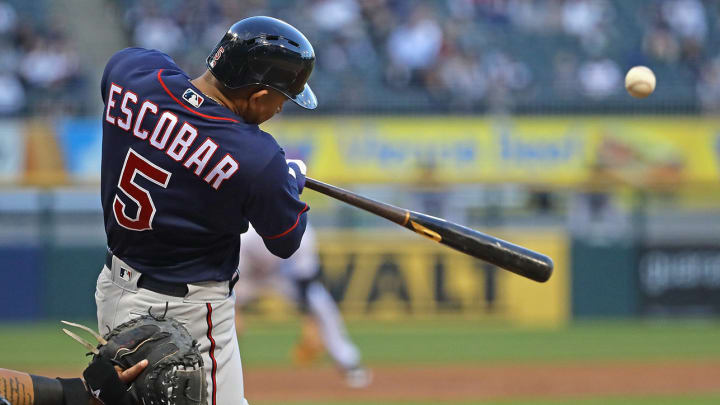
Much of the discussion concerning launch angle this season is how it has changed the game, and not necessarily for the better. Shifts lead to more uppercut swings, which lead to more high fastballs, which combine to increase whiffs and strikeouts, all of which decrease the number of balls in play.
It’s generally a less compelling way to play baseball, even if each individual adjustment to what came before it increases a player’s chance of succeeding.
Every column and TV segment bemoaning the evolving game and recommending fixes ignore the fact that some players have remade themselves amid this launch angle revolution, morphing themselves from middling performers into breakouts. I would like to see more balls in play, but at the same time, want to celebrate these players. And I’d like to start with Eduardo Escobar.
Before this season, Escobar settled into a career as a useful utility infielder. He could play every position across the infield, dabble in the outfield, and hit for a little power. He broke out with 21 homers last year, but still slashed just .254/.309/.449 in 499 plate appearances. Entering 2018, his age-29 season, there was little reason to think he’d deviate from the .253/.301/.397 hitter he had been over the first 2,000 plate appearances of his career, with the possible exception of the power from last season carrying over.
But Escobar has been one of the brightest surprises this season. Through Wednesday, he’s hitting .291/.341/.570 with 12 homers, a league-leading 26 doubles and 41 RBIs. He already has more WAR, by both Baseball-Reference and FanGraphs measures, than he did in his 21-homer season last year, and will almost certainly pass his career high, set in 2013, by the All-Star break.
Andrelton Simmons Is The Hardest Player to Strike Out in the Big Leagues
Escobar could be an All-Star, and that’s one of the true longshot stories of this season. He may not have even opened the year with an everyday spot in the Minnesota lineup if Jorge Polanco didn’t get suspended for a PED violation.
It isn’t hard to pinpoint how Escobar revamped his entire game. He’s getting the ball airborne more than ever, cutting his ground-ball rate to a career-low 25.6%, and increasing his fly-ball rate to a career-high 48.3%. Last year, those numbers were at 33.7% and 45.3%, respectively. His HR/FB ratio is up to 14.1%, his hard-hit rate is 41.5%, and his soft-hit rate is 14.8%. All of those, too, are career bests.
Statcast gave the world launch angle in 2015. That year, according to the service, Escobar’s average launch angle was 15.2 degrees, and then dipped to 14.5 degrees in 2016. Last year, when he hit a career-high 21 homers, it jumped to 18.5 degrees. It’s up again this season, to 19.7 degrees. All of this makes it clear that Escobar is making a concerted, successful effort to lift the ball.
The efficacy of Escobar’s new approach appears entirely based on two things: aggressiveness and pitch selection. Working a count to simply work it isn’t always a good thing. Often, it mistakes activity for achievement. Earlier this week, we considered how Andrelton Simmons is striking out less in part by forcing the action earlier in his plate appearances. Escobar is doing the same, and while he’s striking out slightly more this year, he’s reaping the rewards of swinging more often at pitches he can handle.
Escobar’s z-swing rate, the frequency with which he swings at pitches in the strike zone, is up to a career-high 70.3% this season, according to Pitch Info. He’s making contact less often, but is making up for that on volume. Check out his batting average and slugging percentage by zone this year, courtesy of Brooks Baseball.
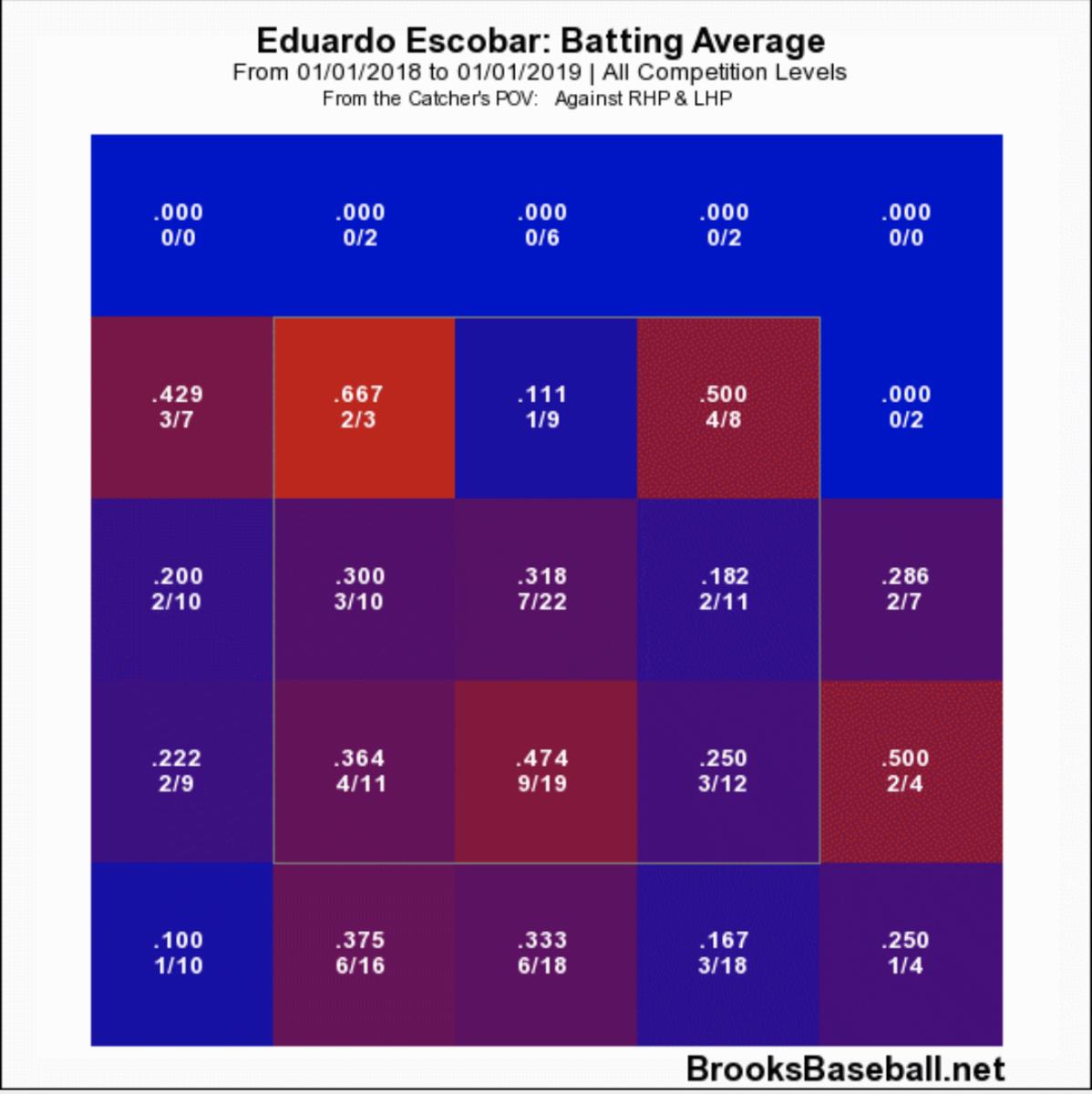
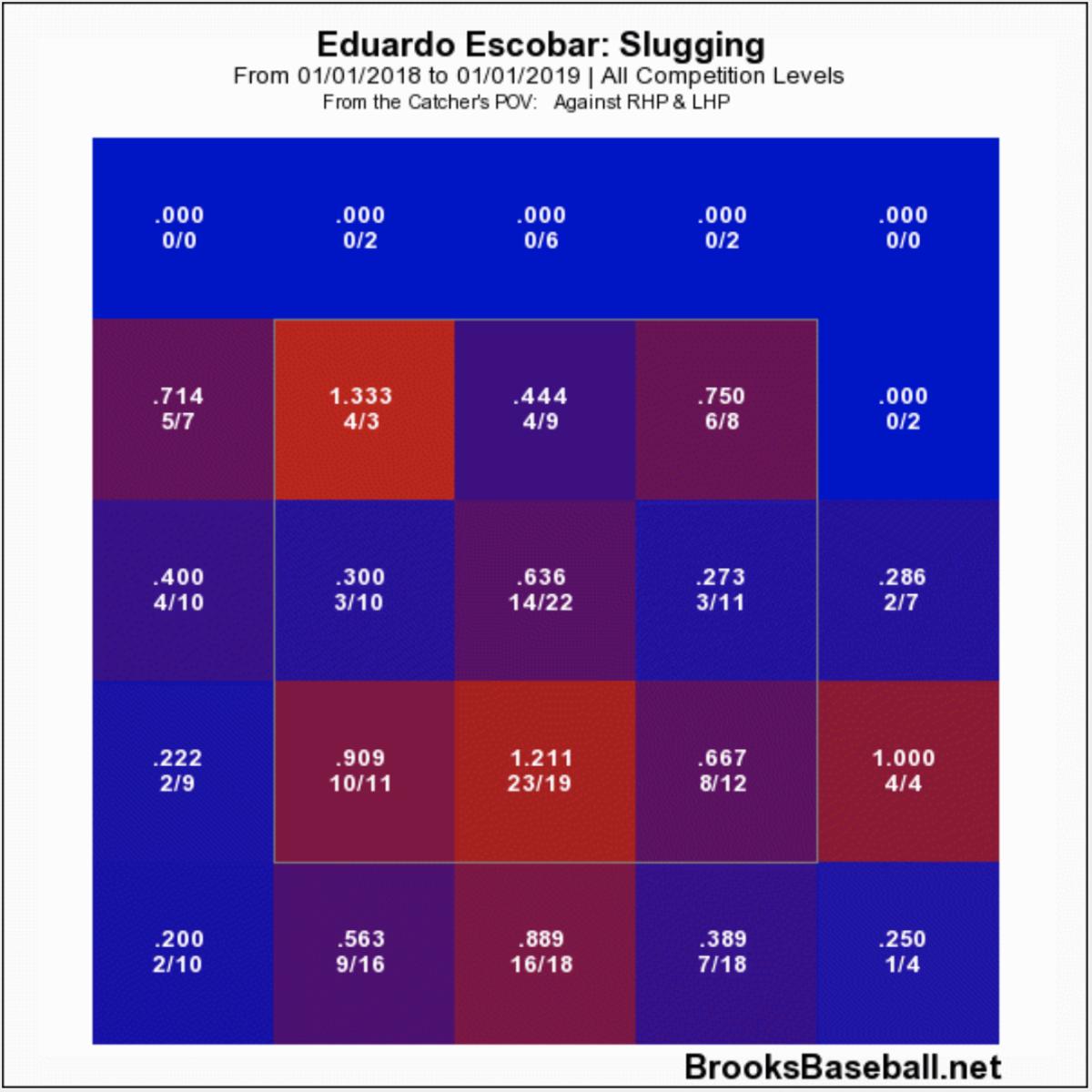
If one thing jumps out about either of those charts, it’s Escobar’s slugging percentage on pitches at the bottom of the strike zone and down out of the zone. Hitters like Escobar, deliberately trying to hit the ball in the air, are going to do more damage on low pitches.
It’s much easier to get to and lift a low pitch with authority than it is a high pitch. Put simply, it’s hard to catch up to a high fastball when you’re swinging with a slight uppercut. That’s the pitcher’s adjustment to the launch angle revolution. Attack the zone with high fastballs, which will induce whiffs and popups.
This is where Escobar’s pitch selection comes into the equation. The following two charts are Escobar’s swing rates by zone over the last two seasons. The first is from 2017, and the second is from this year.
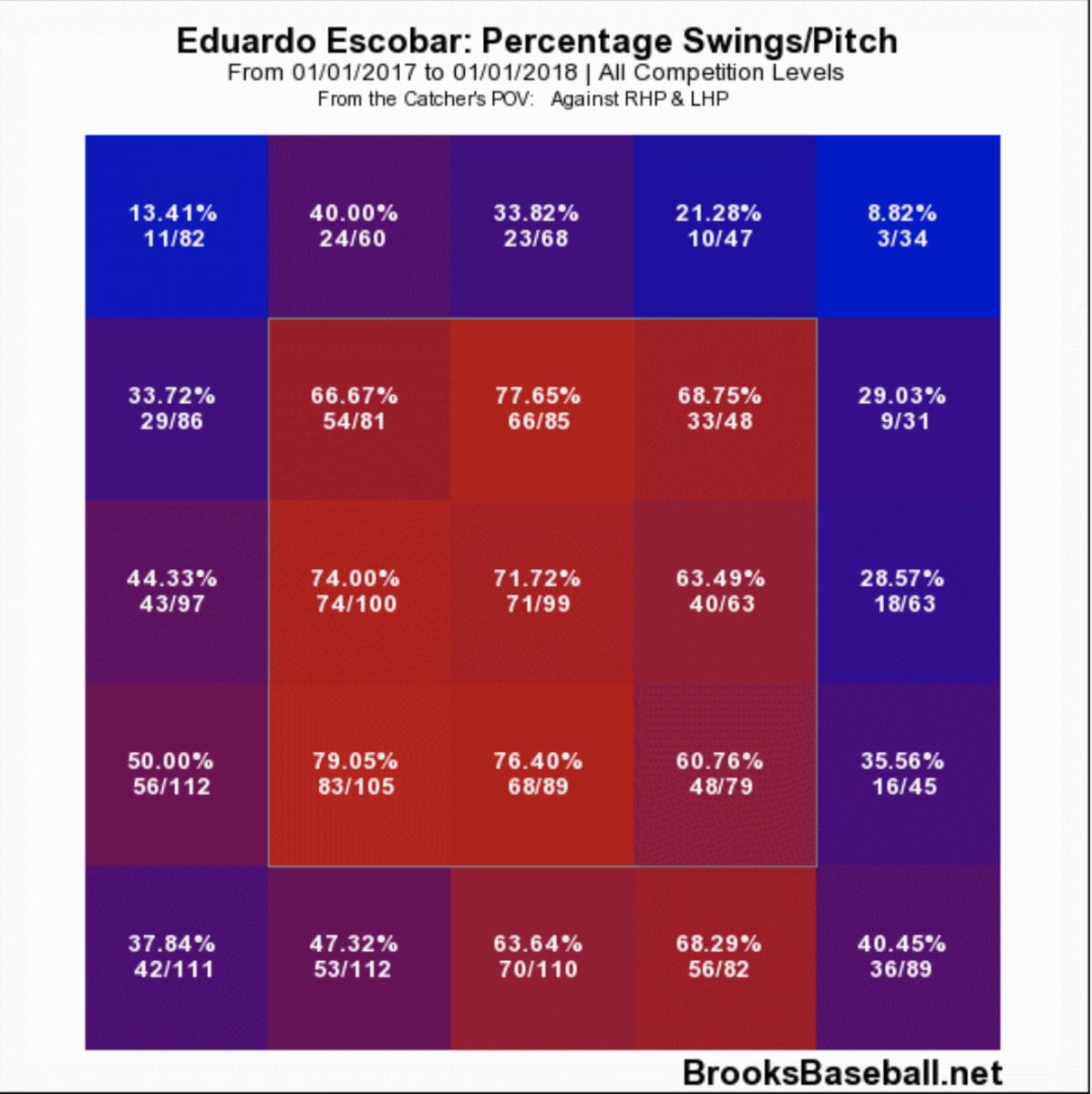
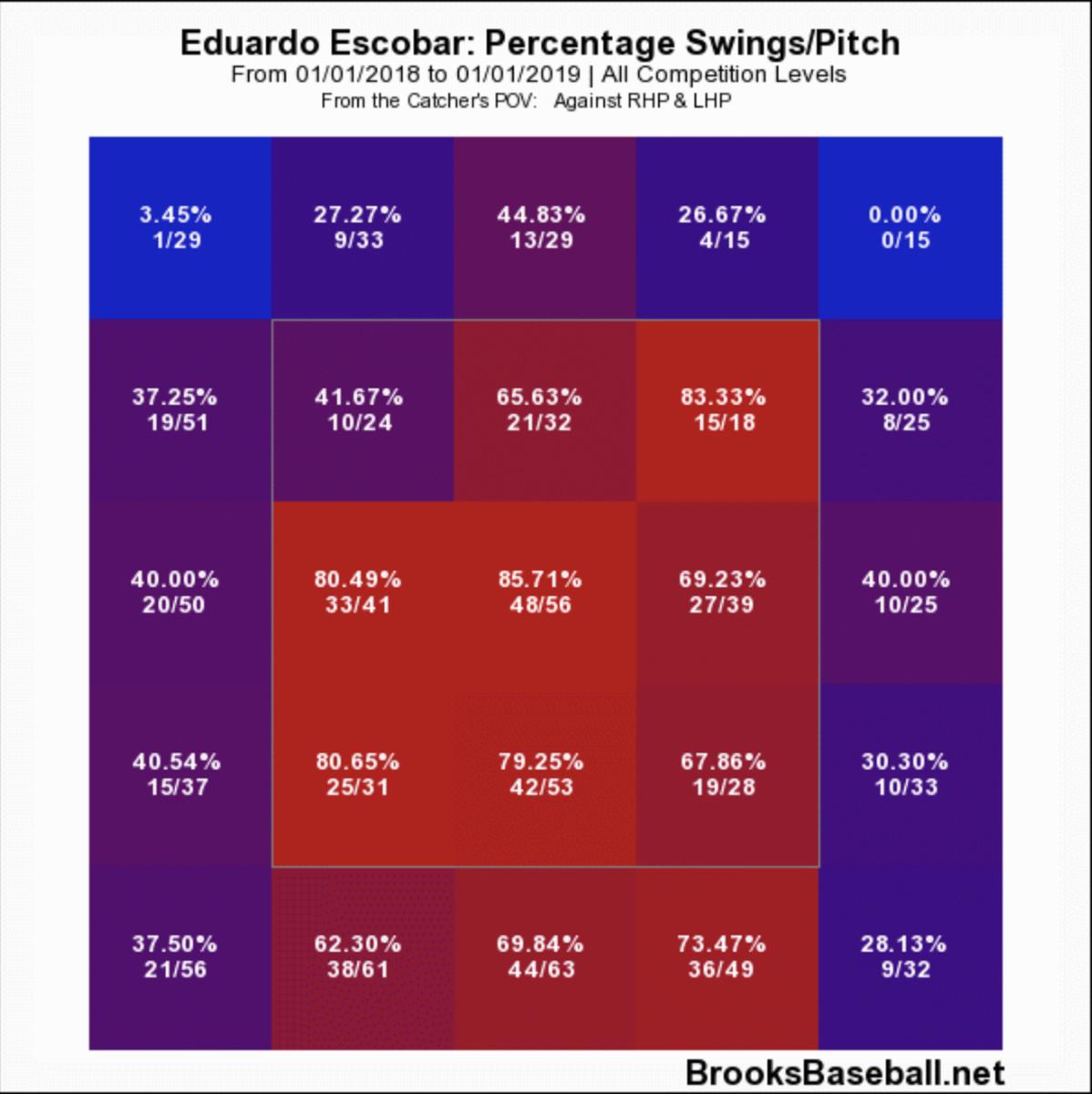
Add up each row, and here’s what you’ll get:
Top of the zone: 2017—71.5%, 2018—62.2%
Middle of the zone: 2017—70.6%, 2018—79.4%
Bottom of the zone: 2017—72.9%, 2018—76.8%
Below the zone: 2017—60.9%, 2018—68.2%
Loathe the changes wrought by the launch angle revolution if you must, but do not let it diminish your appreciation of the players who have recreated themselves by embracing it. Two years ago, Escobar was a reliable utility infielder, little known outside Minnesota. Now he’s become one of this season’s 25 most valuable hitters by fWAR, and is possibly ticketed for his first career All-Star Game at 29 years old. That is well worth celebrating.
